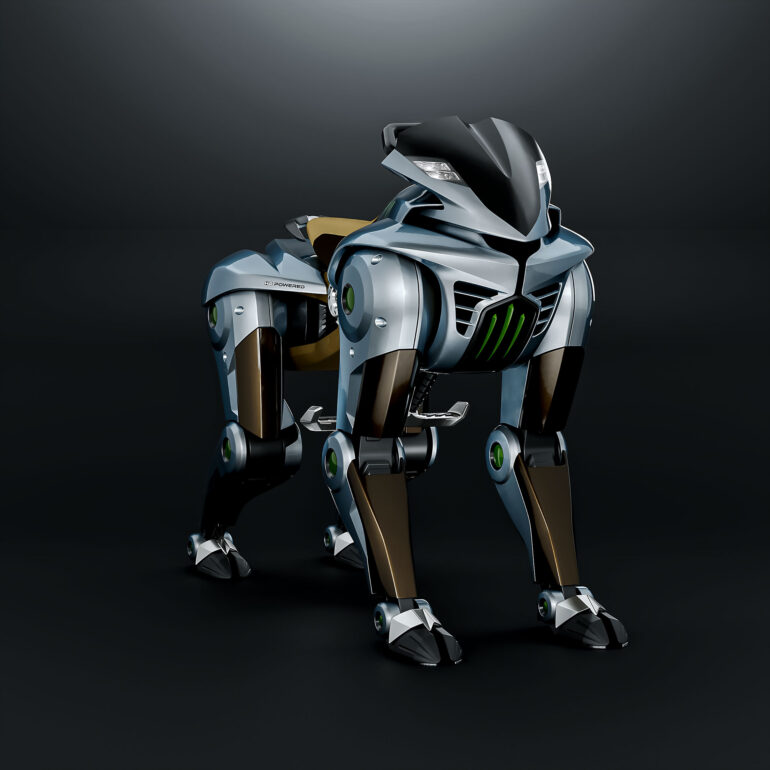Kawasaki Heavy Industries stole the spotlight at Expo Osaka-Kansai 2025 with a wild concept known as Corleo—a hydrogen-powered, four-legged robotic mount designed for off-road travel. Picture a cybernetic steed straight out of a sci-fi epic. Combining artificial intelligence, robotics, and clean energy, Corleo aims to redefine recreational mobility and potentially replace ATVs in the rugged terrain space with a cleaner, high-tech twist.
Engineered with four independently powered limbs, Corleo moves with an almost lifelike gait, handling uneven surfaces with remarkable poise. Each leg operates on its own set of instructions, allowing for adaptive responses to complex landscapes. Whether crawling over rocks or trudging through sludge, the system adjusts in real time to maintain grip and composure, making it feel more alive than machine.
At the core is a 150cc hydrogen generator that feeds electricity to the robotic limbs. This compact power unit emphasizes eco-friendly engineering in a field dominated by fossil fuels. Rather than going hybrid or electric, Kawasaki goes fully hydrogen, offering a look into the future of low-emission exploration where machinery treads lightly without sacrificing performance.
Sculpted with influences from Kawasaki’s motorcycle division, Corleo features a bold, muscular frame forged from carbon fiber and aluminum. The front fascia evokes a futuristic helmet, complete with a visor-like lighting element that adds to its imposing presence. It’s more than just a concept—it’s a statement on the evolution of mobility and aggressive design language.

Instead of handlebars, riders interact with Corleo through body language. Shifting weight controls direction, adding a layer of physical connection between human and machine. An onboard heads-up display provides crucial stats—hydrogen levels, tilt angles, and orientation—keeping the rider dialed in while navigating unpredictable routes.
Chunky rubber hooves grip all types of ground, from loose dirt to rocky climbs, and the machine even clears small obstacles with short hops. Kawasaki remains tight-lipped on hard specs like top speed or range, but this prototype could see real-world deployment by 2050. Corleo previews a future where green power meets robotic adventure.


